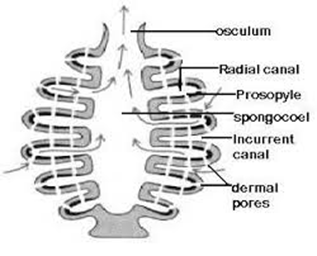Explain What Is Pollination In Brief - Class 12th Bio Notes
What is Pollination? Types, Mechanisms & Importance in Plants

Pollination is one of the most essential processes in the life cycle of flowering plants. It refers to the transfer of pollen grains from the anther (male part) to the stigma (female part) of a flower, enabling fertilization and seed formation. This process ensures the continuation of plant species and promotes genetic diversity when it occurs between different plants.
🌼 Types of Pollination in Plants
Pollination in plants mainly happens in two ways:
• Self-Pollination
• Cross-Pollination
1. Self-Pollination
In self-pollination, pollen grains are transferred from the anther to the stigma of the same flower or another flower on the same plant. This type of pollination maintains genetic purity but reduces diversity. Self-pollination occurs in two main forms:A) Autogamy
Autogamy happens when the pollen grains from the anther are transferred to the stigma of the same flower. It occurs through three methods:• Cleistogamy: In some plants, the flowers do not open, ensuring complete self-pollination.
Examples: Oxalis, Viola.
• Homogamy: The anther and stigma of the bisexual flower mature at the same time.
Examples: Mirabilis, Potato, Sunflower.
• Bud Pollination: Anthers and stigma mature before the flower bud opens.
Examples: Wheat, Rice, Pea.
B) Geitonogamy
In geitonogamy, pollen grains are transferred from one flower to another flower on the same plant, but genetically it is still considered self-pollination.
🌸 Want Easy-to-Understand Pollination Notes?
Get high-quality, exam-ready notes on Pollination at a student-friendly price.
Still confused? Let’s make Biology simpler for you!
📩 Mail Us Now for Notes
Advantages of Self-Pollination
• Ensures higher chances of pollination.🌸 Want Easy-to-Understand Pollination Notes?
Get high-quality, exam-ready notes on Pollination at a student-friendly price.
Still confused? Let’s make Biology simpler for you!
📩 Mail Us Now for Notes• Maintains purity of the species and avoids unwanted mixing of traits.
• Plants do not need to produce a large number of pollen grains.
Disadvantages of Self-Pollination
• No new desirable traits are introduced.
• Harmful characters cannot be easily removed.
• Does not support evolution and genetic improvement.
2. Cross-Pollination
Cross-pollination refers to the transfer of pollen grains from the flower of one plant to the stigma of another plant of the same species but genetically different individuals. It is also known as Xenogamy or Allogamy.If you’d like to learn more about the structure of pollen grains, click here → Structure of Pollen Grains.
Natural Mechanisms That Promote Cross-Pollination:
a) Dichogamy
When the male and female parts mature at different times, preventing self-pollination.Examples: Coriander, Jasmine, Sunflower.
b) Unisexuality
Male and female flowers occur on either the same plant (monoecious) or separate plants (dioecious).c) Heterostyly
Flowers have different lengths of stamens and styles, preventing pollen from reaching the stigma of the same flower.Examples: Primula, Linum.
d) Herkogamy
A physical barrier prevents self-pollination even when anther and stigma mature at the same time.Examples: Calotropis, Orchids.
e) Self-Incompatibility
In some cases, pollen grains from the same flower fail to germinate on the stigma, preventing fertilization. This condition is called self-sterility.🌸 Pollen-Pistil Interaction: The Journey of Pollen Grains
For pollination to result in fertilization, the pistil recognizes compatible pollen. Here’s how the process occurs:1. Landing: Pollen grains land on a compatible stigma.
2. Germination: Pollen grains germinate, forming a pollen tube.
3. Pollen Tube Growth: The tube travels through the style toward the ovary.
4. Fertilization: Male gametes are released into the ovary, where fertilization takes place.
🌼 Artificial Cross-Pollination Techniques
Two important methods are used in plant breeding:
• Emasculation: Removal of stamens from a flower to prevent self-pollination.
• Bagging: Covering the flower with a bag to avoid unwanted pollination from other sources.


This comment has been removed by a blog administrator.
ReplyDelete